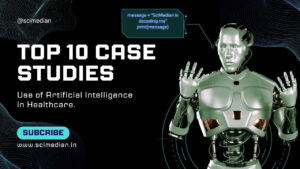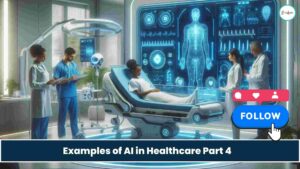Whole exome sequencing Cost, Importance, and time
Introduction
Whole Exome Sequencing (WES) is a cutting-edge genomic technique that has transformed the field of genetics. By focusing on the protein-coding regions of the genome, WES provides detailed insights into genetic variations that can lead to various diseases. In this blog, we will explore five key questions about WES to help you understand its principles, applications, and benefits.

What is the Cost of Whole Exome Sequencing?
The cost of Whole Exome Sequencing can vary widely depending on several factors, including the provider, the depth of sequencing, and the complexity of the analysis. On average, the cost of WES ranges from $1,000 to $5,000. This price includes the sequencing process, data analysis, and interpretation of the results. Some advanced WES tests, which offer higher coverage and more detailed analysis, can be more expensive.
Several factors influence the cost of WES:
- Provider: Different laboratories and healthcare providers may charge varying prices for WES. It’s essential to compare prices and services offered by different providers to find the best option.
- Depth of Sequencing: The depth of sequencing, measured in coverage (e.g., 30x, 100x), affects the cost. Higher coverage provides more accurate results but is more expensive.
- Complexity of Analysis: The complexity of the data analysis and interpretation can also impact the cost. More detailed and comprehensive analyses are typically more expensive.
What is the Cost of a Whole Exome Sequencing Test in India?
In India, the cost of a Whole Exome Sequencing test is generally more affordable compared to other countries. The price typically ranges from INR 20,000 to INR 50,000. Several factors influence the cost, including the sequencing depth, the technology used, and the provider. For instance, a WES test with 80-100x coverage can cost around INR 24,570. It’s important to note that prices may vary between different cities and laboratories.
Factors affecting the cost of WES in India include:
- Sequencing Depth: Similar to global trends, higher sequencing depth in India results in more accurate data but at a higher cost.
- Technology Used: Advanced sequencing technologies and platforms may increase the cost of WES.
- Provider and Location: Different laboratories and healthcare providers in various cities may offer different pricing. It’s advisable to research and compare options to find the most suitable provider.
What Diseases Can Whole Genome Sequencing Detect?
Whole Genome Sequencing (WGS) is a comprehensive method that sequences the entire genome, including both coding and non-coding regions. This allows WGS to detect a wide range of genetic disorders and conditions, including:
- Rare Genetic Disorders: WGS can identify mutations responsible for rare genetic diseases that are difficult to diagnose using traditional methods. These disorders often involve mutations in multiple genes, making WGS a valuable tool for accurate diagnosis.
- Cancer: By identifying genetic mutations in cancer-related genes, WGS can help in understanding the genetic basis of different types of cancer and guide treatment decisions. This includes identifying mutations that drive cancer progression and those that may respond to targeted therapies.
- Infectious Diseases: WGS can be used to detect and track outbreaks of infectious diseases by sequencing the genomes of pathogens. This helps in understanding the spread and evolution of infectious agents, aiding in public health responses.
- Neurological Disorders: WGS can diagnose various neurological conditions, such as epilepsy, intellectual disabilities, and developmental delays. These conditions often have complex genetic underpinnings that WGS can help unravel.
- Cardiovascular Diseases: Genetic mutations that contribute to heart diseases can be identified using WGS, aiding in early diagnosis and management. This includes identifying inherited cardiac conditions and risk factors for heart disease.
- Metabolic Disorders: WGS can detect genetic mutations responsible for metabolic disorders, providing insights into their underlying causes and potential treatments. This includes conditions like phenylketonuria (PKU) and other inborn errors of metabolism.
How Long Does Exome Sequencing Take?
The time required to complete Whole Exome Sequencing can vary depending on the laboratory and the complexity of the analysis. Generally, the process takes several weeks to a few months. The steps involved in WES include DNA extraction, library preparation, target enrichment, sequencing, and data analysis. Each of these steps requires careful attention to detail and quality control to ensure accurate results.
Here is a breakdown of the typical timeline for WES:
- DNA Extraction: This initial step involves extracting DNA from a sample, such as blood or saliva. This process usually takes a few days.
- Library Preparation: The extracted DNA is fragmented, and adapters are added to create a library of DNA fragments. This step can take a few days to a week.
- Target Enrichment: Special probes are used to capture the exonic regions of the DNA. This process typically takes a few days.
- Sequencing: The captured exonic regions are sequenced using high-throughput sequencing technologies. Sequencing itself can take a few days to a week, depending on the depth of sequencing required.
- Data Analysis: The sequenced data is analyzed to identify genetic variants. This step is the most time-consuming and can take several weeks to a few months, depending on the complexity of the analysis and the bioinformatics tools used.
Conclusion
Whole Exome Sequencing is a powerful tool in the field of genomics, offering valuable insights into genetic disorders and guiding personalized medicine. By focusing on the protein-coding regions of the genome, WES provides a comprehensive and cost-effective solution for diagnosing and understanding various diseases. As technology advances, the accessibility and applications of WES will continue to grow, making it an essential component of modern healthcare.
Whole exome sequencing Cost, Importance, and time Read More »







